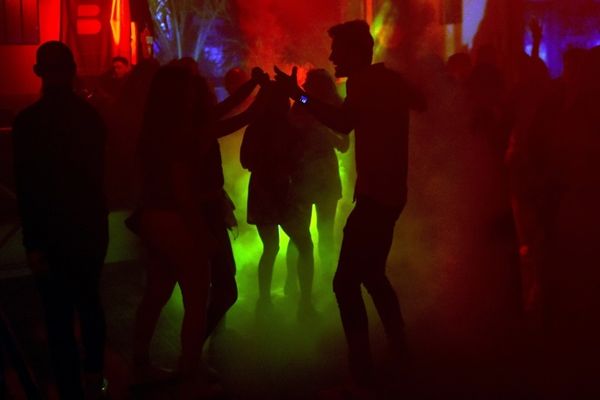
Dancefloor-fillers need to be all about the bass, new research has suggested.
Scientists found that people moved more when listening to music with very low frequency bass.
A small-scale experiment by Canadian researchers at a live concert concluded that gig-goers moved on average 11.8% more while low frequency speakers were on, compared with when they were off.
Music is a biological curiosity - it doesn't reproduce us, it doesn't feed us, and it doesn't shelter us, so why do humans like it and why do they like to move to it?— Researcher Daniel Cameron
Those who took part in the experiment – data was collected from 43 people – wore motion-sensing headbands to monitor their dance moves during an almost hour-long concert by electronic music duo Orphx.
The music was manipulated throughout the show, with the very low bass-playing speakers being turned on and off every two and a half minutes.
Participants also completed surveys before and after the event to measure concert enjoyment, examine how the music felt physically and check that the change in sound was undetectable.
The study’s first author, neuroscientist Daniel Cameron, said he was motivated to try to find out why people like to move to music.
The post-doctoral fellow at McMaster University in Ontario said: “I’m trained as a drummer and most of my research career has been focused on the rhythmic aspects of music and how they make us move.
“Music is a biological curiosity – it doesn’t reproduce us, it doesn’t feed us, and it doesn’t shelter us, so why do humans like it and why do they like to move to it?”
Researchers involved in the study, published in the journal Current Biology, said it was “highly unlikely” that participants could detect the changes in frequency and were therefore responding subconsciously.
They said the results showed “that a complex, social behaviour – dance – can be increased in intensity by VLFs (very low frequencies) without participants’ awareness”.
Dr Cameron said the study had “high ecological validity, as this was a real musical and dance experience for people at a real live show”.
He said such low frequencies “may also affect vestibular sensitivity, adding to people’s experience of movement”.
The vestibular nerve is in the inner ear and sends messages to the brain.
“Nailing down the brain mechanisms involved will require looking at the effects of low frequencies on the vestibular, tactile and auditory pathways,” Dr Cameron added.










